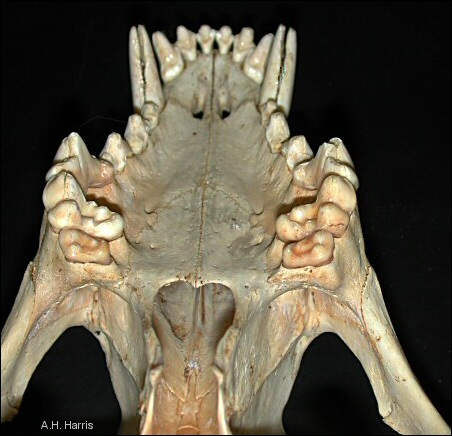

Next time your pet lizard yawns in your face or an agitated rattlesnake opens wide, take a good look at the inside of the mouth (with all due care, of course). You'll see a big difference in the roof of their mouths compared to ours. Namely, the nostrils open directly into the mouth cavity in most reptiles, but almost in the throat in mammals.
This is one of the many differences between reptiles and mammals as we
became hot-blooded. The reptilian mouth is present in us, but hidden by a false
ceiling, so to speak. Shelves of bone and flesh have grown inward from each side of the
mouth to meet in the midline, separating the mouth cavity from the nasal cavity. Why?
Basically, so we can chew and breath at the same time. Warm-bloodedness is a wonderful
trait, but requires a constant supply of oxygen to burn the food that keeps us warm and
active. A snake doesn't mind not breathing for a few minutes—but try it yourself,
and see what lovely shades of blue you quickly turn!

Contributor: Arthur H. Harris, Laboratory for Environmental Biology, Centennial Museum, University of Texas at El Paso.
Desert Diary is a joint production of the Centennial Museum and KTEP National Public Radio at the University of Texas at El Paso.

Skull of a Gray Wolf (Canis lupus) showing the secondary palate. The view is of the underside of the skull from above and behind. The opening below what looks like the top half of a stylized heart (near the end of the toothrows) is the opening of the air passage. The shelf of bone beyond it, forming the roof of the mouth, is the secondary palate.